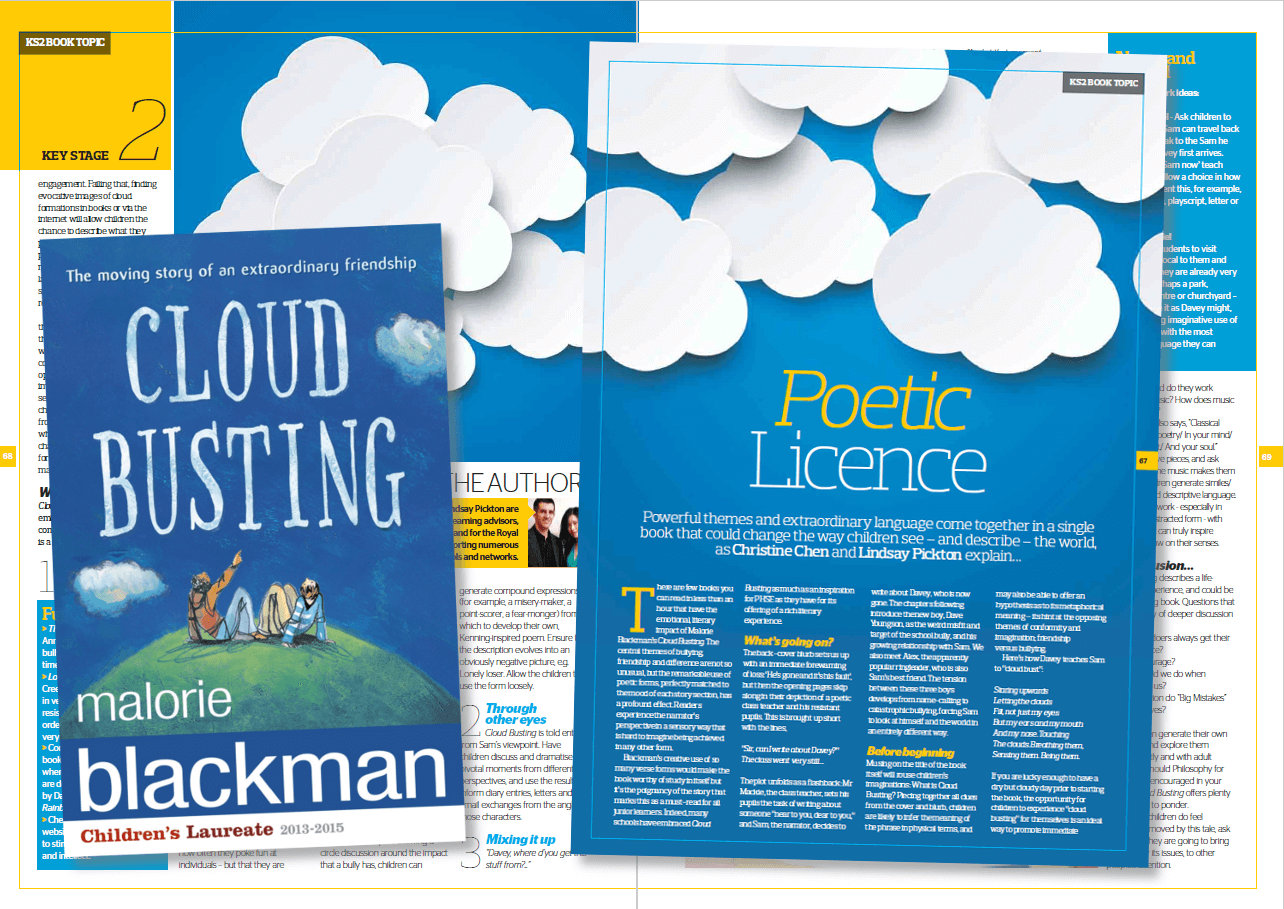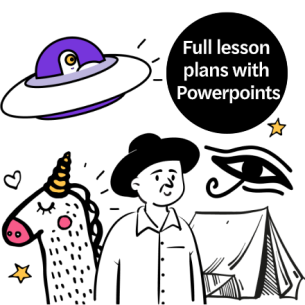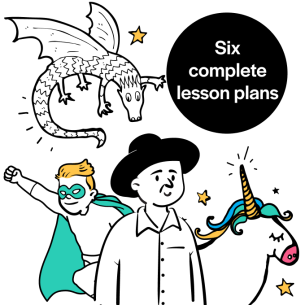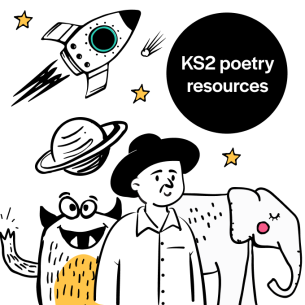Three-page PDF featuring cross-curricular activity ideas for KS2
KS2
Years 3-6
In Cloud Busting by Malorie Blackman, powerful themes and extraordinary language come together to change the way children see – and describe – the world…
There are few books you can read in less than an hour that have the emotional, literary impact of Malorie Blackman’s Cloud Busting.
The central themes of bullying, friendship and difference are not so unusual. However, the remarkable use of poetic forms, perfectly matched to the mood of each story section, has a profound effect.
Readers experience the narrator’s perspective in a sensory way that is hard to imagine being achieved in any other form.
Blackman’s creative use of so many verse forms would make the book worthy of study in itself. However, it’s the poignancy of the story that marks this as a must-read for all junior learners.
Indeed, many schools have embraced Cloud Busting as much as an inspiration for PHSE as they have for its offering of a rich literary experience.
What’s in the download?
A three-page PDF, offering lots of different activities and writing responses in response to the book.
What is Cloud Busting by Malorie Blackman about?
The back-cover blurb sets us up with an immediate forewarning of loss: ‘He’s gone and it’s his fault’. The opening pages then skip along in their depiction of a poetic class teacher and his resistant pupils.
This is brought up short with the lines, “Sir, can I write about Davey?”. The class went very still…”
The plot unfolds as a flashback. Mr Mackie, the class teacher, sets his pupils the task of writing about someone “near to you, dear to you”. Sam, the narrator, decides to write about Davey, who is now gone.
The chapters following introduce the new boy, Dave Youngson and his growing relationship with Sam. Dave is a weird misfit and target of the school bully.
We also meet Alex, the apparently popular ringleader, who is also Sam’s best friend. The tension between these three boys develops from name-calling to catastrophic bullying, forcing Sam to look at himself and the world in an entirely different way.
Christine Chen and Lindsay Pickton are experienced literacy and learning advisors, working independently and for the Royal Borough of Kingston, supporting numerous schools and networks.













